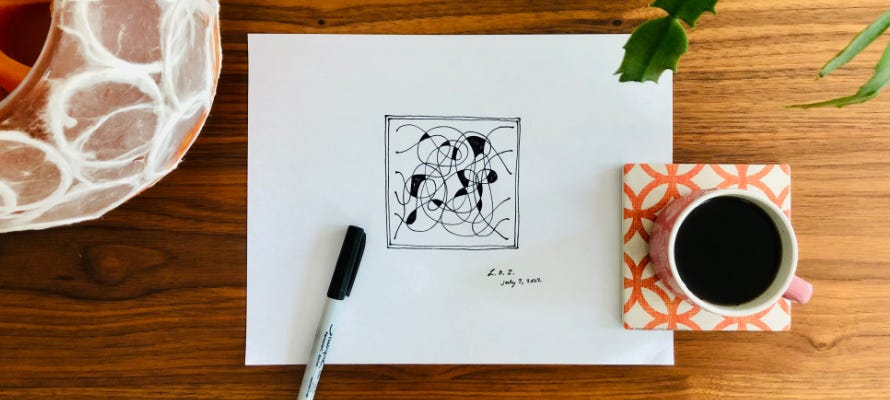It’s All Fun and Games
Why fun and play are key ingredients in innovation.
*This is the second in a series of posts. Read the first here.
It’s no secret that our enjoyment of a thing leads to our doing more of that thing. It’s not rocket science. When you were a child, did you go down a slide just once and then leave the playground? Read one page of a funny comic and then put it down?
Jessica Hische once wrote about the importance of procrastiworking (the work you do when you are putting off other work) and in theory, that work is likely closer to what you should be doing, professionally speaking, if you wish to be more productive and happy, or something to that effect. And I believe it’s true. Aren’t the things you choose to spend your time doing usually more fun?
I found myself making Photoshop brushes when nobody was telling me to do so. I fit in brush-making whenever I could while working as a designer at a firm, made brushes in between editorial illustration assignments when I was freelancing, and I still make brushes *outside* of the number I am contractually obligated to make for Adobe to this day. Because it’s so fun. Not for everyone — for ME. And that’s the key point: I’ll bet there is something you enjoy doing more than most other people, you do it a lot, and this naturally makes you better at it. Better in ways that really matter: efficiency, quality, originality …
I couldn’t help but become an expert at making brushes because A) I spent an inordinate amount of time doing it and B) the fun of it meant that I was actually in a state of ‘play’ whenever I was deep in the process — and that perpetual play, combined with growing expertise, led to innovation. But as the title of this newsletter suggests, I did not set out to become an expert; it kind of happened in the background while I was having fun. And I truly believe this can happen for others.
Have you ever built something with Lego? The great thing about them is that they offer exactly what a person needs to think and act creatively with little effort: flexibility with constraints. There are a fair number of differently shaped and sized bricks, varying colors, but only one way to connect a brick to another brick. This combination of choices with limited means of construction is just right - you can get started quickly and enter a playful state without much friction. If I poured a bucket of Lego bricks onto the floor and asked the average person to make something, they would manage without too much difficulty.
But if I gave someone a blank sheet of paper and asked them to draw something with no direction whatsoever (and they were not a professional illustrator), this experience would be very different. Why? The blank page offers infinite possibilities; it’s too much, it is intimidating, and therefore, not likely to instill confidence, much less encourage play/fun.
Photoshop brushes are perfect in this way: any two-dimensional shape can become a brush, but there are only a limited number of behaviors and controls one can use (and in limited combinations) to produce something useful or interesting. Thus, it’s a perfect environment for playful experimentation - very ‘Lego.’
Last time, I asked you to think about something you do better than most people you know. Now, I ask you: do you enjoy doing that thing? And does it give you ample space to play, experiment, and potentially, innovate? If the answer to both of these questions is, ‘yes,’ you may be on the way to figuring something out that could lead to very good things.
Next time, I’ll write about how you are less unique than you think you are (despite what they told you in elementary school) and why that is a very, very good thing for your business.
Things I’m making for you.
I’m currently working on an exciting project: a large set of templates, actions, and assets for comics artists that will allow you to set up your pages, panels, and more in a fraction of the time it would normally take. Look for it soon on my Gumroad shop - there will be both a free version and a paid version of the final product. There are several video previews on my Twitter feed.
A friend of mine and I have made the first-ever meditative drawing app, Lines of Zen. You can read more about why it’s good for those who find traditional meditation difficult, as well as the science behind it, and download it here.
Until next time, take care of yourselves, take care of each other, remember to be kind, and I’ll say, Ciao for now.
Kyle





nice insights!